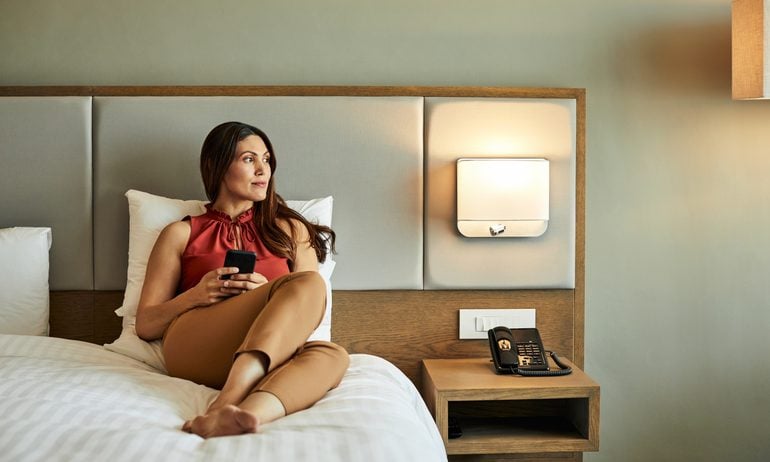How to Stay Safe When Using Mobile Banking Apps
Mobile banking can be a valuable part of your financial tool bag if you take some steps to keep your accounts safe.

Many, or all, of the products featured on this page are from our advertising partners who compensate us when you take certain actions on our website or click to take an action on their website. However, this does not influence our evaluations. Our opinions are our own. Here is a list of our partners and here's how we make money.
Americans embraced mobile banking as their main account access more than any other method from 2017 to 2021, according to the Federal Deposit Insurance Corp.'s 2021 report on unbanked and underbanked households.
Even so, a new NerdWallet survey found that many people are hesitant to use mobile banking because of security concerns. More than 2 in 5 (42%) banking customers who don’t use mobile banking apps say they don’t trust the security of them as the reason.
Although those concerns aren't unfounded, they don't need to come between you and a successful mobile banking life. Here are steps you can take to ensure you're as safe as possible when banking on your phone.

Member FDIC
Forbright Bank Growth Savings

4.25%
$0

Member FDIC
Axos ONE® Savings

4.66%
$1,500

Member FDIC
Varo Savings Account

5.00%
$0

Member FDIC
E*TRADE Premium Savings

4.00%
$0
Install only trusted apps
Most mobile users are on Android or iOS, which both have app stores. For people with iPhones, it's the Apple App Store, while Android users get the Google Play Store. These app stores are the go-to places for finding authentic, safe apps.
Apple's vetting process for all the apps in its store includes a number of security reviews. These cover aspects including standard privacy policy concerns and ensuring the apps don't mislead users.
Google offers apps certified by its Play Protect system. Play Protect scans apps added to your phone and can remove or deactivate apps that are potentially harmful. It can also warn you about apps that violate Google's unwanted software policy, which polices apps' transparency and ease of use.
If you're in doubt about which mobile banking app to install, go directly to your bank's website on your phone. Most banks will supply a link to the official app in the app store of your choice. If your bank doesn't, contact it to make sure you're getting the app you need.
Use two-factor authentication when available
Even Americans who use mobile banking apps — almost three-quarters (74%) of users — have concerns about mobile banking, according to the NerdWallet survey. Of those, 63% say they're worried about their accounts being hacked.
One of the best ways to keep your bank accounts safe, no matter how you bank, is to have a strong, unique password — "ILoveCats!" doesn't count. With a strong password, you can add a second layer of protection with two-factor authentication, or 2FA.
Two-factor authentication is like the door attendant at an apartment building. Just having the key won't get you into the apartment because the person at the door isn't letting anyone they don't know in without references.
With 2FA, you'll have an extra security step enabled. Often, it will mean getting a text or email with a separate code when logging in to your account. Requiring a text means no one can log in to your account without access to your phone as well.
According to the NerdWallet survey, 38% of mobile banking app users are worried about someone having access to their bank account if their phone is lost or stolen.

Manage access to your phone
To keep strangers out of your phone, make sure you have a strong lock screen pin, lock your screen whenever you're done with your phone and don't share the pin with anyone.
But even if you do your best to not lose your phone — which might also be your wallet, house key, identity card and transportation pass — accidents will happen. If your phone is lost or stolen, contact your bank. Just like with a lost credit card, letting your bank know early can help you avoid problems.








